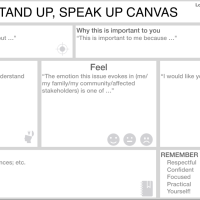Imagine a world where architecture is not one of the world’s most polluting industries, but instead has a positive impact on both people and the planet. At Mashable, we’ve long celebrated architecture and design’s changemakers, those looking toward environmentally responsible and informed ways of building our cities and towns, restoring and preventing damage, and repurposing materials.
In 2022, when climate-related news brought mostly anxiety and very real disasters, we chose hope over despair. We sought inspiration from the visionaries who take the road less travelled and dare to imagine, and then help build, a different kind of future. We spoke to landscape architects working with nature to better our cities, showcased architects returning to ancient building practices, and celebrated the ingenuity of designers breaking the boundaries of imagination by turning solar panels into art, and capturing carbon in…tiles.
Climate change anxiety: How to stop spiraling and make a difference
If you’ve missed them, here are some of architecture and design’s most exciting ideas.
1. Sponge cities proved a viable solution to urban flooding
In 1997, Yu Kongjian, a young landscape architect and Harvard graduate returned to his native China and proposed what was then seen as a radical notion: that China’s monsoon climate is incompatible with the country’s adoption of Western urbanisation models. Yu’s theory was that the removal of natural organic matter from cities, and swapping soil for concrete, turned cities into impermeable jungles that can lead to devastating flooding. The antidote he offered was simple: nature itself can help prevent such disasters, we just need to let it be.
At the time, Yu wasn’t taken seriously, but a tragic flood in Beijing in 2012 made local authorities reconsider his ideas. Today, the so-called ‘sponge cities’ are national policy, and though the idea’s origins are too ancient to accurately trace, the term ‘sponge cities’ is uniquely Yu’s.
In August, we explored the genesis of Yu’s sponge cities, some of the architects applying the green city model on a global scale, and how efficient sponge cities are in the face of climate change. This notably features the story of the twin cities of Nogales, Sonora (Mexico) and Nogales, Arizona (U.S.) – a striking example of the damages rapid urbanisation can cause.
2. London’s newest Underground line helped build a bird sanctuary
The expansion of city infrastructure can sometimes work to nature’s advantage. During the building of the Elizabeth Line, London’s most ambitious railway yet, over 7 million tonnes of soil were dug from the ground. Instead of wasting this precious material, Crossrail, the company building the Elizabeth Line, donated about half of it to the Royal Society for the Protection of Birds (RSPB). The 3.5 million tonnes of soil were shipped from London to the Essex coast where they were used to create a bird sanctuary.
Thanks to this delivery, RSPB built sea defences and restored lagoons and mudflats once native to the area, but lost to agriculture, coastal erosion, and sea level rise.
3. Solar panels evolved, aesthetically
When speaking about climate change and cities, we have to examine the way urban dwellers get their energy. In some European cities, whose historic centres act as open-air museums, bulky, view-obstructing solar panels are prohibited by conservation laws. This makes sense, as from their genesis, solar panels have been thought of primarily as an energy tech invention. Now that the technology has advanced, it’s time to look at the bigger picture. If cities want to produce their own energy at a large scale, solar designer Marjan van Aubel argues, we need to rethink the way solar panels look too.
In September, van Aubel told Mashable about the solar panels she designs, and how aesthetics may as well be the secret weapon we need to revolutionise the appeal of solar energy.
4. A sustainable oval school was built to empower young girls
What’s good for nature is often good for people, too. Diana Kellogg’s Rajkumari Ratnavati Girl’s School, a proud oval building in the Thar desert, proves just that. After her studio was commissioned to create the girl’s school in the city of Jailsamer (in the state of Rajasthan, India), Kellogg took an intersectional approach to building sustainably in the desert’s harsh conditions. To create a naturally cooled building, she used locally sourced materials and collaborated with local craftspeople who helped her recreate the area’s ancient building practices, with a modern twist. Cultural tradition was especially important, and Kellogg ensured that modesty screens in the form of reimagined jali walls create a safe environment for the students while also stimulating learning and play.
When it comes to energy production and consumption, the school is self-sufficient, thanks to another blend between modernity and tradition. While the roofs are equipped with solar panels, the courtyard uses regional water collection techniques to store rainwater during the Monsoon season.
5. Tile designers captured carbon
In India’s urban areas, however, the concerns are quite different. A staggering 43 of the world’s 50 most polluted cities are here, which is mostly due to heavy traffic, even heavier reliance on fossil fuels, and tire and waste burning practices. Amid the many pollutants, black carbon (CO2e) is especially damaging to both human and environmental health.
At the same time, one of black carbon’s important features is that it consists of particles that can be captured and prevented from entering the atmosphere. In an attempt to do just that, Mumbai-based studio Carbon Craft Design has found a way to upcycle the pollutant by incorporating it into its tile design. According to the company, a single tile can prevent around five kilograms of black carbon from entering the atmosphere – equivalent to the pollution a single car on the road produces within 15 minutes. And while the design may not combat air pollution all at once, its small steps could turn into a giant leap if similar practices are adopted by the construction industry at large.
Source : 5 times designers and architects worked to help the planet in 2022














